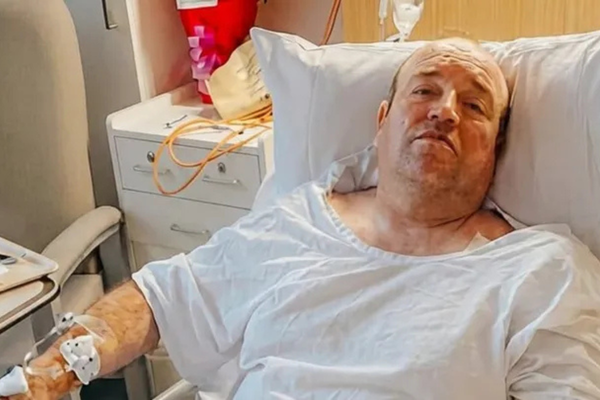
Foodborne illness is never expected, and Salmonella poisoning can turn an ordinary meal into days of discomfort. The infection happens when Salmonella bacteria enter the digestive system, often through contaminated food or drinks. The symptoms may seem minor at first, but can quickly become exhausting. Acting swiftly helps limit complications and supports recovery.
Knowing what to do in those first few hours could make a real difference in how you feel and how fast you get better.
1. Identify the Signs Early
Symptoms of Salmonella infection usually appear between six hours and two days after eating contaminated food. Stomach cramps, diarrhea, fever, and chills are the most common signs. These may resemble other symptoms of food poisoning, which makes them easy to dismiss. Pay attention to how severe they become and how long they last.
If your condition doesn’t improve or the symptoms worsen, contact a healthcare provider. Dehydration, constant vomiting, or blood in your stool require medical attention. Keeping track of what you recently ate can also help identify where the infection started.
If you suspect your illness came from a restaurant or a packaged product, you’re not alone. Foodborne outbreaks have affected many communities across the country, including Texas. Houston Salmonella lawsuits, for instance, have highlighted how serious these cases can become when negligence is involved. Learning about past outbreaks can help you recognize when your case might be part of something larger.
2. Rehydrate and Replace Lost Fluids
Fluid loss is one of the biggest risks when you’re dealing with Salmonella. Diarrhea and vomiting quickly drain your body of water and electrolytes. Sip fluids often throughout the day instead of drinking large amounts all at once. Water, oral rehydration solutions, or clear soups are all good options to replace lost fluids.
If drinking feels difficult, start with small sips or ice chips until your stomach settles. Avoid caffeine and alcohol since they may make dehydration worse. You might also try oral rehydration salts, which can help restore minerals and energy if your symptoms are severe.
Children, older adults, and those with weaker immune systems are especially prone to dehydration. Signs such as dry mouth, dizziness, or very dark urine mean you need medical help right away. Staying hydrated supports your body’s recovery and keeps bacterial food poisoning from becoming more serious.
3. Rest and Limit Activity
Rest is one of the most effective steps you can take when recovering from food poisoning. Your body needs time and energy to fight infection. Give yourself permission to slow down and focus on healing.
Even light tasks can feel overwhelming during recovery. Avoid strenuous activity or long periods on your feet until your strength returns. Listen to your body and take short breaks whenever you feel tired.
A calm, comfortable environment also helps. Keep the room cool, limit noise, and prioritize good sleep. Proper rest reduces fatigue and lowers the risk of complications, including possible bloodstream infections caused by untreated Salmonella cases.
4. Eat Light and Simple Foods
When your stomach starts to settle, begin with bland foods that are easy to digest. Bananas, rice, toast, and applesauce are gentle choices that provide nourishment without upsetting your stomach. Avoid greasy meals, spicy foods, or dairy products until you’re sure you can tolerate them.
Eat small portions throughout the day instead of large servings. This approach helps your digestive system recover and prevents cramping or nausea from returning. If you’re unsure about a food, wait a little longer before trying it.
As your appetite improves, reintroduce balanced meals with lean protein, vegetables, and whole grains. Be cautious with raw or undercooked eggs and contaminated fruits and vegetables, which are common sources of Salmonella. Some people try home remedies like ginger tea or broth to ease nausea, but start slowly and stop if anything worsens your symptoms.
5. Practice Safe Food Habits Moving Forward

Once you’ve recovered, review your food handling habits to help prevent future illness. Salmonella often spreads through small mistakes in the kitchen. Wash your hands before and after handling raw meat, and use separate cutting boards for raw and cooked foods to maintain proper food hygiene.
Keep your refrigerator at or below 40°F and refrigerate leftovers within two hours. Reheat meals to at least 165°F before eating. Throw away food that looks or smells suspicious, even if it seems fine otherwise.
When eating out, choose restaurants known for good hygiene and safe food preparation. Avoid contaminated water sources, and be cautious when traveling to areas where sanitation may be limited. Simple habits like these can help you stay safe and prevent another case of foodborne illness.
In Conclusion
Recovering from Salmonella poisoning takes patience and attention to detail. Acting early, staying hydrated, resting, and reintroducing food gradually all play a part in helping you recover safely. Building strong food safety habits afterwards is equally important. Each careful step protects your health and keeps your meals safe long after the infection has passed.







